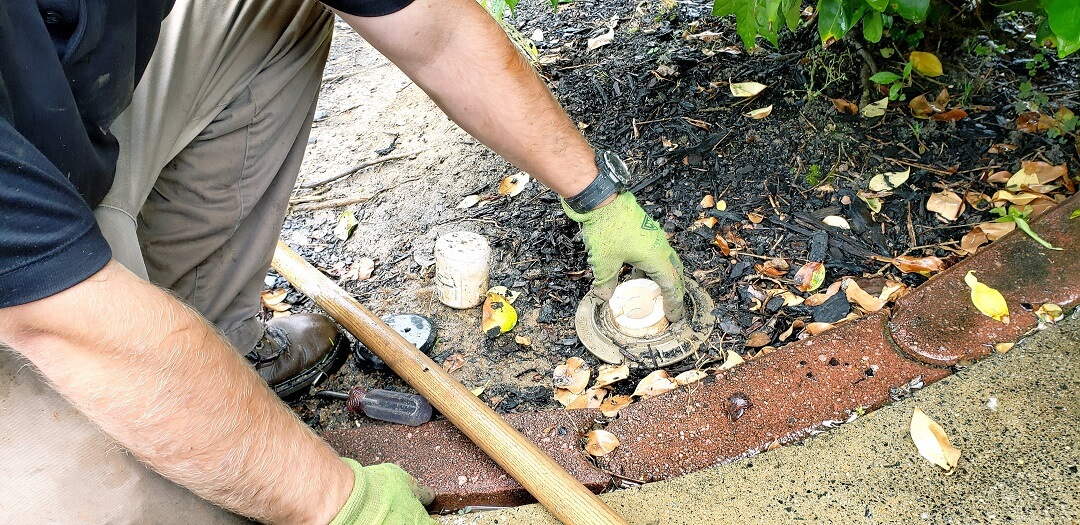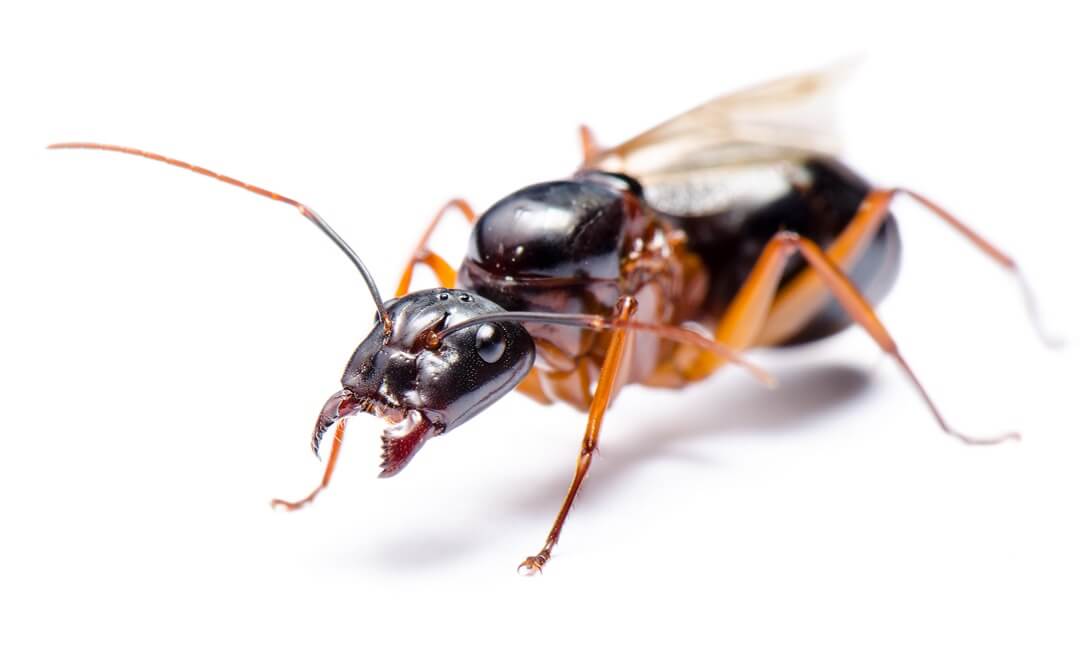When homeowners see a swarm of flying ant-like insects in the springtime, they often assume that termites are infesting their homes. But are these winged pets really termites? Flying carpenter ants are often confused for termites in the spring, confusing many homeowners. But what is the difference between carpenter ants with wings vs termites? While there are many differences that we will explain below, the fact is both of these pests can cause wood and structural damage to your home.
Key takeaways
- Carpenter ants and termites are often confused by homeowners, but there are key differences.
- Carpenter ants create nests in wood by chewing through it, while termites eat cellulose in wood.
- Carpenter ants have winged ants that appear after a colony is established, while termites have winged swarmers for reproduction.
- Carpenter ants have a different body shape, antennae, and wing size compared to termites.
- Prevention and control methods differ for carpenter ants and termites, with professional pest management often required for termites
What are carpenter winged ants?
Carpenter ants are large ants that make their nests in wood. Unlike termites that eat the cellulose in the wood, carpenter ants chew through wood to create a home for their large colonies. Not all carpenter ants within a colony will have wings and these winged ants only appear after a colony has become established. The purpose of the winged ants is to expand the colony into other areas. Once these winged ants grow, they leave the nest and pair off into one male and one female. The male ant dies, and the female shed her wings to start a new colony as the queen.

What are termites?
Termites are insects that feed on wood and are often responsible for severe damage to wood homes and structures. Termites have different types within a colony, such as the worker termites, which are typically cream in color and wingless. These are often seen by homeowners within outside mud tubes or when the damaged structure is broken open. Winged termites, known as swarmers, are the reproductive members of a termite colony and tend to be darker in color and closely resemble a winged carpenter ant.
Winged carpenter ants vs. termites
With both of these insects commonly swarming in the springtime, it is very common for homeowners to confuse the two. While both pests can cause significant damage to your home, it is essential to determine which pest you might be facing, and treatment and potential damage can be different. The good news is there are distinguishing differences between both of these destructive pests.
Physical appearance
When they are flying around, it may be easy to confuse these two pests, however, with a closer look, there are some very distinguishing differences in their appearance.
- Body shape: when determining the difference based on body shape, look closely at the abdominal section. Termites have a slender, rectangular shape with no center narrowing. In contrast, carpenter ants have an indentation similar to a waistline.
- Antennae: Termites have straight antennae while carpenter ants have bent antennae.
- Wings: A termite will have four wings, all of the equal size. A carpenter ant will have four wings, with the hind wings being shorter in size.
Diet
When it comes to diet, these two pests are very different. While termites feed on the cellulose found within wood and plants, carpenter ants primarily feed on nectar, seeds, other insects, and food debris.
Lifecycle
The lifecycle of carpenter ants and termites is very different. Ants have four stages of development: egg, larva, pupa, and adult. Adult worker ants only live for a few months and the queen only lives for a few years. Termites, on the other hand, have three life cycles: egg, nymph, and adult. Adult worker termites can survive for a couple of years, and a healthy termite queen can live for decades.
Habitat and infestation
Both the carpenter ant and termite live in large colonies typically found in wood structures. When it comes to home infestations, this often means the wood found within your home or foundation. Termite infestations are often responsible for serious structural damage because they use wood as a source of food. In contrast, carpenter ants tunnel through the wood to create their colony and are not as prone to causing severe structural damage. In addition, carpenter ants are more likely to seek moist and damaged wood for their nests, so are not as prone to make residence in your home.

How to get rid of carpenter ants and termites
Getting rid of carpenter ants or termites involves different processes for each. In many cases, carpenter ants are often controlled by eliminating any conditions that attracted them to the area in the first place. Termite control, however, requires professional pest management and often structural repair after eradication.
How do you prevent carpenter ant and termite infestations?
Prevention is one of the key components of effective pest management. When it comes to carpenter ants, you want to focus on removing any sources of dead, rotten, or wet wood from your property. Keep any firewood stored away from the home and seal around your property to prevent water damage to any exposed wood. Keep tree branches away from your home to reduce the risk of these pests entering your home. Because carpenter ants eat food debris, such as crumbs, keep all food properly stored and regularly wipe down countertops.
To help prevent termite infestations, you want to reduce wood-to-ground contact at access points around your home, seal any gaps around water or gas lines that enter your home, keep landscaping mulch at least six inches from your foundation, remove excess moisture or water pooling around the foundation, and keep any firewood away from your home.
Don’t share your home with carpenter ants or termites
Both carpenter ants and termites can be destructive in nature, but this is especially true of termites. Termites, according to the USDA, cause over $5 billion per year in household damages. If you see a swarm of flying insects that look like termites or carpenter ants, it is best advised to call in professionals, like the team at Insight Pest Management, who can determine which pest you have and the level of infestation, provide extermination, recommend any structural repairs, and help you develop a prevention plan that will stop them from returning. To learn more about how our team of expert technicians can help, schedule a free evaluation today.


